You are using an out of date browser. It may not display this or other websites correctly.
You should upgrade or use an alternative browser.
You should upgrade or use an alternative browser.
No 1 Squadron
- Thread starter Fatman17
- Start date
Fatman17
THINK TANK: CONSULTANT
- Apr 24, 2007
- 36,755
- 43,107
- Country of Origin

- Country of Residence

- Thread starter
- #47
Pakistan Air Force moves into former Islamabad airport
2019-05-15
The Pakistan Air Force (PAF) has taken over Islamabad’s former Benazir Bhutto International Airport, located on the outskirts of the adjacent city of Rawalpindi. PAF Base Nur Khan, which had previously shared the runway and taxiways with the airport, is now responsible for the large passenger terminal and the adjacent ramp where the airliners once parked.
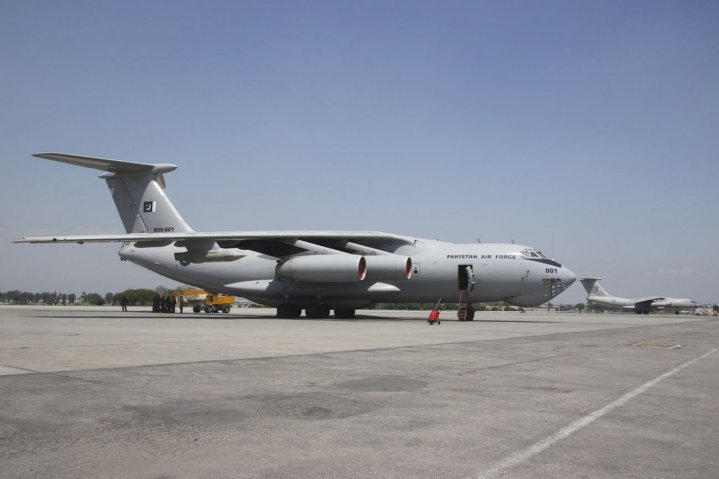
Il-78 aircraft have now moved onto the ramp of Pakistan’s former Benazir Bhutto International Airport, which has now become part of PAF Base Nur Khan. (Alan Warnes)
The large apron is now home to No 10 Squadron’s four Il-78 multirole tanker transport aircraft, which can now taxi to the runway without having to manoeuvre around the PAF’s other aircraft. In the near future the PAF’s passenger terminal, which is currently housed inside a small building in the base’s complex, will also be relocated.
There are several shelter areas at the airport that are used for drills or high levels of alert. During the recent stand-off with India, known locally as Operation ‘Swift Retort’, a detachment of PAF JF-17 Thunder fighter aircraft were deployed to the base to defend Islamabad.
The PAF’s Chief of the Air Staff, Air Chief Marshal Mujahid Anwar Khan, told Janes he expected more operational squadrons to move to the larger base, including a helicopter unit. It is unclear, however, whether a permanent fighter unit is also expected to move in.
Fatman17
THINK TANK: CONSULTANT
- Apr 24, 2007
- 36,755
- 43,107
- Country of Origin

- Country of Residence

- Thread starter
- #51
List of Pakistan Air Force squadrons
The following is a list of all active aircraft squadrons of the Pakistan Air Force (PAF), sorted by type. Squadrons are listed by their current names and roles.Aerial Refueling Squadrons
| Squadron | Nickname | Role | Command | Wing | Date Established | Base | Aircraft | Notes |
|---|---|---|---|---|---|---|---|---|
| No. 10 Squadron | Bulls | Multi-role Tanker Transport | Air Defence Command | 35 Composite Air Transport Wing | 15 August 1959 | PAF Base Nur Khan | Il-78MP | [1] |
Fatman17
THINK TANK: CONSULTANT
- Apr 24, 2007
- 36,755
- 43,107
- Country of Origin

- Country of Residence

- Thread starter
- #52
No. 11 Squadron
After playing a significant role in the Afghan War, this squadron maintained its legendary traditions during numerous operational exercises in the last decade. It made a landmark contribution to the history of the PAF by winning the 'Top Gun' trophy of ACES, three years in a row, in 1993, 1994, and 1995.
While deployed at Masroor in February 1990, the squadron carried out GB trials at Sonmiani air-to-ground range and also participated in exercise Hit Hard-XII. In July 1991, the squadron participated in a DACT Camp against 5, 18 and 20 Squadrons. There was an imminent threat to our nuclear installations in early 1992, and the squadron had to fly the national contingency 'Thunderbolt' for a period from 19 February 1992 onwards. During the last decade, the squadron remained very busy during all the operational, air defence and multi-national exercises, as well as Saffron Bandit, DACT Camps, Inspired Alert etc. Besides, the squadron is also an operational conversion unit for the F-16 aircraft. Therefore, the squadron is responsible for conducting these courses. The squadron achieveda a unique distinction when all of its instructors gathered on-type flying experience in excess of 1,000 hours.
During High Mark-93, the squadron achieved 100 per cent of the allotted task; the squadron earned 225 kills out of all the shots claimed. ATLIS attack had a 100 per cent success rate. The squadron secured third position in the ISAC-96, held at Masroor.
After the nuclear tests by India in May 1998, the tension in the borders heightened. The PAF was out on higher alert and the squadron was moved to its wartime location on 24 May 1998. In spite of the very hot weather and the degraded facilities at the satellite, the squadron measured up to the task, and successfully and satisfactorily performed the day and night ADA duties till Pakistan's oen tests were comleted on 28 May 1998.
The Inspectorate team visited the squadron on 28 October 1991 and termed the inspection as exceptional. The ACES team visited the squadron on 8 February 1993 and the squadron won three out of four trophies, including 'Top Gun' for the year 1993. During ORI of 1995, the squadron won the ACES trophy for the second consecutive time, winning three out of four trophies again. In 1996, the squadron achieved a landmark in the history of the PAF by retaining the coveted ACES trophy for the third consectutive time. During ACES inspection in 1997, the squadron secured the second position, staying very close to the 'Top Gun' squadron for the year 1998.
The squadron had the honor of recieving a number of important visitors, including the Prime Ministers, Chairman Joint Chiefs if Staff, the Defence Ministers and the Chief of Air Staff.

Arrows
After playing a significant role in the Afghan War, this squadron maintained its legendary traditions during numerous operational exercises in the last decade. It made a landmark contribution to the history of the PAF by winning the 'Top Gun' trophy of ACES, three years in a row, in 1993, 1994, and 1995.
While deployed at Masroor in February 1990, the squadron carried out GB trials at Sonmiani air-to-ground range and also participated in exercise Hit Hard-XII. In July 1991, the squadron participated in a DACT Camp against 5, 18 and 20 Squadrons. There was an imminent threat to our nuclear installations in early 1992, and the squadron had to fly the national contingency 'Thunderbolt' for a period from 19 February 1992 onwards. During the last decade, the squadron remained very busy during all the operational, air defence and multi-national exercises, as well as Saffron Bandit, DACT Camps, Inspired Alert etc. Besides, the squadron is also an operational conversion unit for the F-16 aircraft. Therefore, the squadron is responsible for conducting these courses. The squadron achieveda a unique distinction when all of its instructors gathered on-type flying experience in excess of 1,000 hours.
During High Mark-93, the squadron achieved 100 per cent of the allotted task; the squadron earned 225 kills out of all the shots claimed. ATLIS attack had a 100 per cent success rate. The squadron secured third position in the ISAC-96, held at Masroor.
After the nuclear tests by India in May 1998, the tension in the borders heightened. The PAF was out on higher alert and the squadron was moved to its wartime location on 24 May 1998. In spite of the very hot weather and the degraded facilities at the satellite, the squadron measured up to the task, and successfully and satisfactorily performed the day and night ADA duties till Pakistan's oen tests were comleted on 28 May 1998.
The Inspectorate team visited the squadron on 28 October 1991 and termed the inspection as exceptional. The ACES team visited the squadron on 8 February 1993 and the squadron won three out of four trophies, including 'Top Gun' for the year 1993. During ORI of 1995, the squadron won the ACES trophy for the second consecutive time, winning three out of four trophies again. In 1996, the squadron achieved a landmark in the history of the PAF by retaining the coveted ACES trophy for the third consectutive time. During ACES inspection in 1997, the squadron secured the second position, staying very close to the 'Top Gun' squadron for the year 1998.
The squadron had the honor of recieving a number of important visitors, including the Prime Ministers, Chairman Joint Chiefs if Staff, the Defence Ministers and the Chief of Air Staff.
Arrows
Fatman17
THINK TANK: CONSULTANT
- Apr 24, 2007
- 36,755
- 43,107
- Country of Origin

- Country of Residence

- Thread starter
- #53
 | 11th squadron ( PAF) |
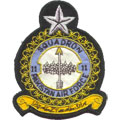
| 11 sqn " Arrows" ( PAF) |
| Status: | Active |
| Version: | F-16A/B block 20 MLU |
| Role: | Multirole |
| Tailband: | N/A |
| Motto: | Your destination is above everyone else’s destination. |
| Badge: | An arrow pointing up through a circle of stars. |
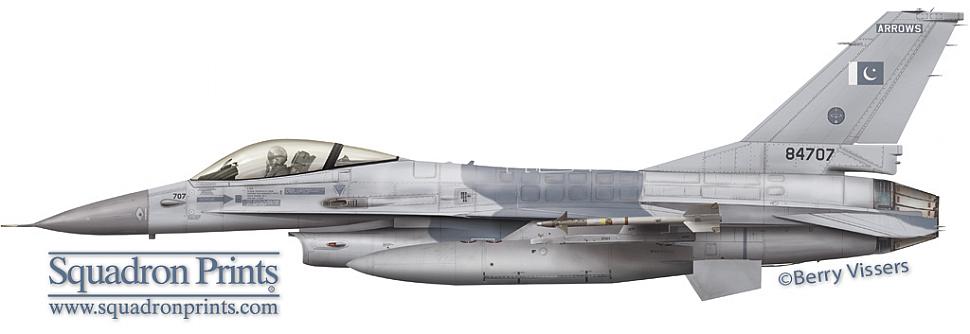
Sideways profile for 11 sqn in 2007.
F-16 History
The 11th squadron was the first within the PAF to be equipped with the F-16. The first aircraft arrived in the course of 1983. With the introduction of the F-16, the squadron was moved from Rafiqui AB to Sarghoda AB to form the 38th Wing there. The first task of the squadron was to train all future F-16 pilots. A task which the squadron still retains until this day.Upon introduction with the PAF, the F-16 became the most modern fighter in their inventory. Therefore, the government decided to base this unit as close as safely possible to the Afghan border. With the Soviet invasion in Afghanistan in 1979, a lot of turmoil existed in the Pakistani-Afghan border region. Russian and Afghan aircraft regularly crossed the border with Pakistan. The F-16s, with their brand-new AIM-9L missiles, were sent to counter these threats.
This tense situation existed until the Soviet withdrawal in 1989. The squadron played an important role in defending Pakistan against any intrusion. However it wasn’t credited with any ‘kills’ during this conflict in contradiction with the other two F-16 squadrons, the 9th and 14th.
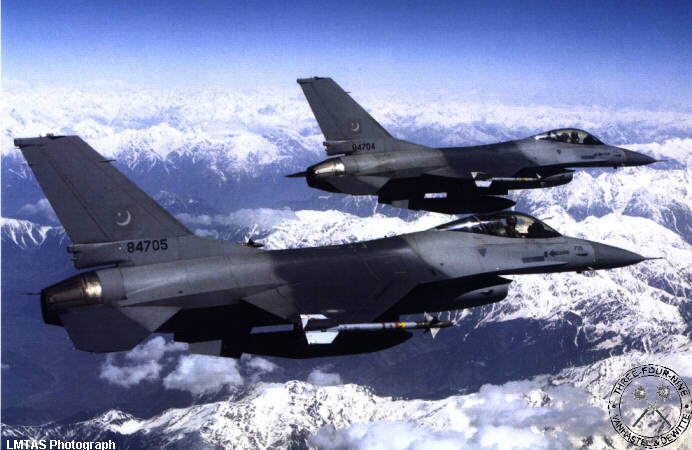
Two-ship Pakistani F-16A formation, #84704 and #84705 - note the slightly different color scheme. [LMTAS photo]
In the mid eighties, it became more and more apparent that the F-16 could be used for more then just air defence. Since maintaining a credible defence is important for Pakistan, it was agreed upon to use the F-16 in the ground attack role too. To have this performed, pin point targeting became a necessity. Since the American designed LANTIRN system wasn’t available to the market at that time and it wasn’t yet compatible with the F-16, certainly not with the block 15 models the PAF was flying, the Pakistani military decided to integrate the Thompson-CSF ALTIS II laser designation pod on its F-16s from 1987 onwards. This made it possible to accurately deliver laser guided bombs as the GBU-10/12.
In the coming years, the F-16 fleet will undergo a major refurbishment operation. Falcon Up and Falcon Star programs are already initiated to prolong the lifecycle of the aircraft as well as an upgrade to MLU standards. This will see the F-16 flying for many more years within the Pakistani Air Force.
In 2013 the squadron was relocated from Sargodha AB to Shahbaz AB. It's task remained the same.
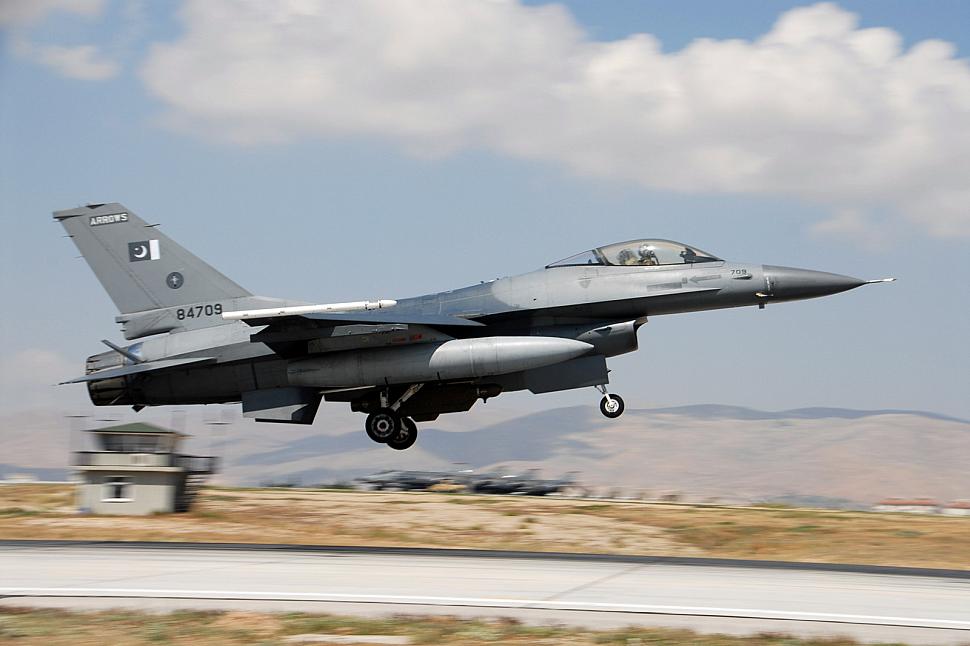
PAF F-16A block 15 #84709 from 11 sqn is seen landing during Anatolian Eagle 2007/2 at Konya AB on June 19th, 2007. [TUAF photo]
Aircraft Markings History
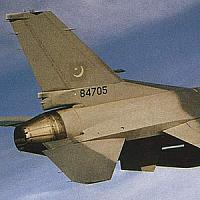
1983 - 2005
The PAF F-16s were pooled at this time and no unit marking were present on the tail. Only a Pakistani flag adorned it in the center with the serial number on the tail base. The flag also existed in a full color format.
2005 - present
The Pakistani flag and serial number remained. A squadron logo was added below the flag with the squadrons name added on top of the tail.
Fatman17
THINK TANK: CONSULTANT
- Apr 24, 2007
- 36,755
- 43,107
- Country of Origin

- Country of Residence

- Thread starter
- #54
Unit History
- 1949: Activation of the squadron in Mauripur
- 1949: ‘Attacker’ F1
- 1956: F-86F ‘Sabre’
- 1965: F-86F ‘Sabre’ (Sarghoda AB)
- 1966: F-6A
- 1971: F-6A (Rafiqui AB)
- 1983: F-16A/B ‘Fighting Falcon’ (Sarghoda AB)
- 2006: F-16AM/BM 'Fighting Falcon'
- 2013: F-16AM/BM 'Fighting Falcon' (Shahbaz AB)
F-16 Airframe Inventory
- All 11 sqn F-16s in our F-16 Aircraft Database (past and current aircraft)
- Current 11 sqn F-16s in our F-16 Aircraft Database
Photos
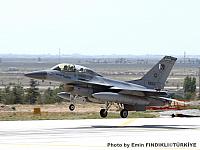
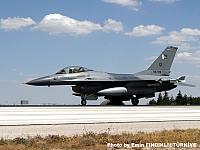
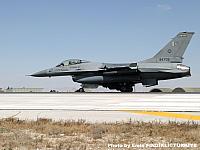
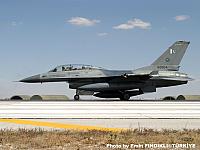

Sources
http://paffalcons.com/squadrons/index.phpErrors and Omissions
Fatman17
THINK TANK: CONSULTANT
- Apr 24, 2007
- 36,755
- 43,107
- Country of Origin

- Country of Residence

- Thread starter
- #55
KARACHI: The Pakistan Air Force's (PAF) No 11 Multirole Squadron was adjudged the best squadron of Inter Squadron Armament Competition, which was held at Sonmiani firing range.
Chief of the Air Staff, Air Chief Marshal Mujahid Anwar Khan, was the chief guest at the closing ceremony of this much anticipated contest, held at an Operational Air Base on Wednesday.

Chief of the Air Staff, Air Chief Marshal Mujahid Anwar Khan, was the chief guest at the closing ceremony of this much anticipated contest, held at an Operational Air Base on Wednesday.
Fatman17
THINK TANK: CONSULTANT
- Apr 24, 2007
- 36,755
- 43,107
- Country of Origin

- Country of Residence

- Thread starter
- #56
Why America’s F-16 Fighting Falcon Still Flies for Pakistan
August 30, 2021.
Pakistan’s F-16s have been no stranger to controversy for nearly four decades.
by Sebastien Roblin
Here's What You Need to Remember: Today, Pakistan operates around sixty-six F-16A/Bs and nineteen F-16C/Ds in four active squadrons, including No. 9 Griffins multi-role squadron in Sargodha, the No. 19 Sherdills training and air defense squadron at Thatta, and the No. 11 Arrows multi-role squadron based at Shahbaz near Jacobabad. The last base also hosts No. 5 Falcons multi-role squadron, the only F-16C/D unit.
https://paid.outbrain.com/network/r...DD_gYTM7G3GTFH4dvXdaMJ13SCh-pA&c=bce710b9&v=4
During an aerial skirmish on February 27, 2019, an Indian Air Force MiG-21 Bison was shot down by a radar-guided missile. The Pakistani Air Force (PAF) claims the kill was scored by a JF-17 Thunder, a domestically-built fighter built with Chinese assistance.
However, India subsequently revealed fragments of an AIM-120C-5 missile—a U.S.-built weapon only compatible with the American-built F-16s in PAF service. Pakistan has incentives to deny the use of F-16s, as secret end-user agreements may restrict the aircraft’s use against India—despite that being an obvious application of the venerable fourth-generation jet. India, meanwhile, claims the MiG-21’s pilot managed to shoot down an F-16.
Air Cover for the Mujahideen
Pakistan’s F-16s have been no stranger to controversy for nearly four decades.
https://paid.outbrain.com/network/r...oqBaCoGvS27slfIz4PUNawnnaz15I2M&c=636df02&v=4
In response to the Soviet invasion of Afghanistan in 1979, Islamabad and Washington collaborated to train, organize and arm mujahideen resistance fighters in Afghan refugee camps in Pakistan. In retaliation, Afghan and Soviet warplanes began bombing the camps—and the PAF’s Chinese-made J-6 jets proved too slow to catch them.
Thus in 1981, Pakistan convinced the United States to sell it F-16 Fighting Falcon single-engine multi-role fighters—a then cutting-edge yet inexpensive-to-operate design with fly-by-wire controls affording it extraordinary maneuverability. The agile Falcon could attain speeds as high as Mach 2 and lug heavy weapons loads, though it did have a limited combat radius (around 350 miles) and early production models lacked beyond-visual-range missiles.
https://paid.outbrain.com/network/r...nKDGONrLTf8leaEoznknaU9vOpjnOc&c=3f5e4e96&v=4
Between October 1982 and 1986, a total of twenty-eight F-16As and twelve two-seat F-16Bs were delivered to Pakistan via Saudi Arabia in Operations Peace Gate I and II. These outfitted the PAF’s No. 9, 11 and 14 Squadrons which flew patrols along the Afghan border, typically carrying two advanced AIM-9L and two cheaper AIMP-9P-4 Sidewinder heat-seeking missiles.
Unlike earlier heat-seekers which could lock on to the hot tail-pipe at the rear of an aircraft, the AIM-9L “Lima” Sidewinders could engage from any angle. The AIM-9L’s ability to hit opponents in a head-on-pass would soon prove particularly effective.
Between 1986 and 1990, the PAF credited th F-16 with shooting down ten Afghan and Soviet jets, helicopters and transport planes, with many additional claims unconfirmed. Soviet and Afghan records definitively confirm only six losses: four Su-22s supersonic fighter-bombers, one Su-25 “flying tank” piloted by future Russian vice president Alexander Rutskoy, and one An-26 cargo plane.
The PAF lost a single F-16, apparently struck by a missile fired by its own wingman. The F-16 patrols reportedly deterred more extensive bombardment of refugee camps on Pakistani soil, and disrupted Soviet efforts to resupply isolated outposts.
The Nuclear F-16 Controversy
By 1990 Pakistan had already placed Peace Gate III and IV orders for seventy-one improved F-16A/B Block 15s. But in October 1990, Pakistan’s nuclear research program led the United States to impose sanctions. Thus, twenty-eight newly-built F-16s for which Pakistan had already paid $23 million apiece were consigned to the desert Boneyard facility in Arizona, where they remained for over a decade.
In the late 1990s, the Clinton administration offered to deliver the jets in return for Pakistan refraining from nuclear tests—but such was not to be. On May 28, 1998 Pakistan detonated five underground nuclear devices in response to an Indian nuclear test. It became evident that the heavy-lifting F-16s would serve as one of Pakistan’s primary nuclear-weapon delivery systems, and intelligence reports indicated that No. 9 and No. 11 squadron F-16s were modified to deliver nuclear gravity bombs on their center pylons.
A year later the two nuclear powers engaged in a limited war when Pakistani commandos infiltrated the mountainous Kargil region of India. As Indian Mirage 2000s pounded the infiltrators while escorted by MiG-29s, F-16s flew combat air patrols along the Pakistani side of the Line of Control reportedly painting the Indian jets with their targeting radars—and vice-versa—in an effort to intimidate.
However, neither air arm was authorized to engage the other, so no air battles occurred. Nonetheless, three years later a PAF F-16B shot down an Indian Searcher II drone that had penetrated deep into Pakistani airspace.
Pakistan Finally Gets More Falcons
Following the 9/11 attacks in 2001, the United States intervened against the Taliban—a fundamentalist faction Pakistani intelligence agencies had cultivated to assert Islamabad’s influence in its war-torn neighbor. Seeking to wheedle half-hearted cooperation from Pakistan, in 2006 the Bush administration finally authorized the “Peace Drive” deal (“Peace Gate” having become poisonous brand) in which the United States handed over twenty-three remaining Peace Gate F-16As and Bs, and sold nineteen far more capable F-16Cs and D Block 52s.
The $5.1 billion deal also involved modernizing Pakistan’s by-then dated F-16A and Bs with the F-16AM/BM “Mid-Life Update.” This involved stripping down and repairing the aging air frames, replacing hundreds of wiring harnesses, exchanging old monochrome cockpit displays with color multi-function displays, and installing wide-angle HUDs and a new modular, digital flight computers which added support for laser and GPS-guided bombs.
Furthermore, an improved APG-66V2 doppler radar allowed the F-16AMs to employ beyond-visual-range AIM-120C-5 air-to-air missiles with a maximum range of sixty-five miles. 600 of the radar-guided fire-and-forget missiles were also sold. Pakistan also acquired DB-110 electro-optical reconnaissance pods capable of scanning 10,000 miles of terrain per hour.
As the Taliban forces expanded across Pakistan’s Swat Valley and Waziristan province, the Pakistani military finally counterattacked in 2009. PAF F-16s flew hundreds of combat missions through 2011, first using DB-110 pods to identify camouflaged Taliban positions, then destroying them with laser-guided 500 and 2,000-pound bombs.
Islamabad’s thirst for the agile jets was not yet sated. In 2013, it purchased nine more F-16As and four F-16Bs directly from Jordan.
Today, Pakistan operates around sixty-six F-16A/Bs and nineteen F-16C/Ds in four active squadrons, including No. 9 Griffins multi-role squadron in Sargodha, the No. 19 Sherdills training and air defense squadron at Thatta, and the No. 11 Arrows multi-role squadron based at Shahbaz near Jacobabad. The last base also hosts No. 5 Falcons multi-role squadron, the only F-16C/D unit.
Besides the F-16A downed by friendly fire, Pakistan has lost six F-16As and two F-16Bs in accidents. In addition to bird strikes, engine failures, and pilot disorientation, one F-16B was consumed by fire after a collision with a wild boar during takeoff caused the nose gear to collapse!
India’s recovery of AIM-120C-5 missile fragments after the air battle on February 27 provides convincing evidence that Pakistani F-16s scored their first kill since 1990. However, India also claims an F-16 was downed by a MiG-21 using an R-73 missile. The PAF denies the claim, though its candor about F-16 involvement is suspect, while Indian media has also circulated demonstrably false “proof of an F-16 loss. The only evidence of an F-16 loss was a Pakistani ground observer who claimed seeing two jets, not one, shot down.
The mere possibility that a Falcon was downed by a 1950s-era MiG-21 should not be over-interpreted. India’s MiG-21 Bisons, though outdated, feature upgraded radars, data-links, self-defense jammers, and agile heat-seeking R-73 missiles targeted with a helmet-mounted sight. The airframe has always had a smallish radar cross-section, is Mach 2 capable, and performed well in exercises against U.S. F-15s and F-16s!
While an F-16 is superior in many respects, particularly situational awareness, an R-73-armed MiG-21 that managed to close within visual range (as ostensibly occurred) would still pose a formidable threat.
In any case, the recent aerial skirmish highlights the important capabilities F-16s continue to provide Pakistan’s military, and the continuing tensions that may evoke as Pakistan aligns itself more with China, and the United States with India. Ironically, just days before the recent skirmish, F-16 manufacturer Lockheed launched a new pitch to move F-16 production to India for a heavily modernized spinoff dubbed the F-21.
Sébastien Roblin holds a master’s degree in conflict resolution from Georgetown University and served as a university instructor for the Peace Corps in China. He has also worked in education, editing, and refugee resettlement in France and the United States. He currently writes on security and military history for War Is Boring. This article first appeared several years ago.
Image: Wikimedia Commons.
Fatman17
THINK TANK: CONSULTANT
- Apr 24, 2007
- 36,755
- 43,107
- Country of Origin

- Country of Residence

- Thread starter
- #57
Shrike F-86 F Pakistan Air Force No. 11 Squadron Sargodha 1965
- Milviz F-86 Sabre
- 5 Superb!
- 77 Downloads
- Not Downloaded yet
- 1.0





Summary AI Generated
Experience the historical Shrike F-86F Sabre adorned in Pakistan Air Force colors, showcasing the heroic feats of Air Commander Muhammad Mahmood Alam during the 1965 Indo-Pakistani War. Witness how he downed nine Indian Hawker Hunter aircraft using only the F-86 barrel weapons, including the remarkable event of shooting down five "Hunters" in just one minute.Bemalung für die Shrike F-86F Sabre .
Dargestellt ist die von Mitsubishi gebaute F-86F40 der PAF Nr.54026 , geflogen von Air Commander Muhammad Mahmood Alam der im indisch pakistanischen Krieg 1965 9 indische Hawker Hunter nur mit den Rohrwaffen der F-86 abschoss .2 warscheinliche Luftsiege sind ebenfalls bekannt .
Am 7.September 1965 schoss er innerhalb einer Minute 5 Hunter ab .
Painting for the Shrike F-86FSabre .
Shown is the Mitsubishi-build F-86F40 opf the PAF No. 54026 , flown by Air Commander Muhammad Mahmood Alam , who shot down nine indian "Hawker Hunter" in the 1965 Indo-Pakistani War using only the F-86 barrel weapons .
2 probable aerial victories are also known .
On September 7 , 1965 , he shot down five "Hunters" within one minute .
Base Product
This add-on is related to Milviz F-86 Sabre.77 Downloads
Fatman17
THINK TANK: CONSULTANT
- Apr 24, 2007
- 36,755
- 43,107
- Country of Origin

- Country of Residence

- Thread starter
- #59
Saturday, June 15, 2024 09:46

Hilal English
Remembering a Fighter Ace
April 2023The year was 1965, and the skies over South Asia were alive with the thunder of war. The Indo-Pakistan conflict had reached a fever pitch and the fate of two nations hung in the balance. It was in this tumultuous time that Squadron Leader M. M. Alam would prove his mettle and earn his place in history.

The month of March takes us down the memory lane when, a decade ago, a brave heart breathed his last on March 18, 2013. In the skies above, there is a legend that echoes through the ages–the tale of a hero who flew like a falcon, soaring high and defying the odds with unparalleled skill and bravery. The hero is none other than Air Commodore Muhammad Mahmood Alam, SJ with Bar, SI (M), a man who fought with honor and dignity for the pride of his country. In the heat of battle, when the sky was filled with the thunder of gunfire and the roar of planes, M. M. Alam rose to the challenge. He flew with a passion that could only come from the depths of his heart and fought with a courage that was unrivalled by any other. His story is more than just one of personal triumph. It is a tale of national pride and sacrifice of a hero who gave his all for the love of his country. His legacy inspires us to be better human beings, to cherish the values that make us who we are, and to remember the heroes who came before us. For in the midst of darkness, it is the shining example of heroes like Air Commodore M. M. Alam (late) that gives us hope. Their unwavering commitment to their cause reminds us of the true meaning of honor, courage and sacrifice.
On July 06, 1935, in the rolling hills of East Bengal, a young boy was born into a world of possibility and potential. He was named M. M. Alam, and from a young age, he exhibited natural aptitude for the world of aviation. As a child, Alam spent his days exploring the fields and forests that surrounded his small town near Calcutta. He would gaze up at the sky with wonder, dreaming of the day when he too, would take to the skies and soar like birds. His family moved to East Pakistan at the time of partition and got settled in Dacca. With a thirst for knowledge and a passion for adventure, Alam pursued his education with vigor. He studied at Government High School Dacca, honing his skills and perfecting his craft, but it was his decision to join the Pakistan Air Force (PAF) in 1952 that would truly set him on the path to greatness. Alam's career in the PAF was marked by

In January 1964, then Squadron Leader M. M. Alam was entrusted with the command of the prestigious No. 11 Squadron, ‘The Arrows’, leading which he fought the 1965 War and became a national hero. Under his resilient command, the squadron flew 227 sorties during the seventeen days of war with India. He led the squadron from the front and was a role model for the young fighter pilots. The squadron under his command was credited for shooting down ten Hunters, three Gnats and damaging another three Hunters. Out of this enviable record, nine kills and two probables were accredited to Squadron Leader M. M. Alam. The year was 1965, and the skies over South Asia were alive with the thunder of war. The Indo-Pakistan conflict had reached a fever pitch and the fate of two nations hung in the balance. It was in this tumultuous time that Squadron Leader M. M. Alam would prove his mettle and earn his place in history. On September 06, 1965, during an aerial combat over enemy territory, Squadron Leader M. M. Alam flying as pilot of an F-86 Sabre Jet, shot down two enemy’s Hunter aircraft and damaged three others. In recognition of his exceptional flying skill and display of valor, he was awarded Sitara-i-Jurat. As the battle raged on, Alam's kill count continued to climb, his name soon becoming synonymous with victory and courage, and when the dust finally settled, he had achieved the impossible. On September 7, 1965, during an interception mission against enemy aircraft attacking PAF Station Sargodha, Squadron Leader Alam destroyed five more Hunter aircraft in less than a minute, the first four in less than 30 seconds, a feat which remains a record till date. It was a feat that would go down in history, setting a world record for the most enemy kills in a single mission and earning Alam the title of Fighter Ace. This deadly blow to Indian Air Force (IAF) virtually enabled PAF to control the skies over the battlefield, and the IAF dared not engage further in combat with the daring Shaheens. In acknowledgement of the exceptional professionalism and bravery in aerial combat, Squadron Leader Muhammad Mahmood Alam was later awarded a Bar to his SJ.
For Squadron Leader M. M. Alam, the battle of 1965 was a moment of triumph and glory, a shining example of the courage and skill that he brought to every mission, but these accolades were never the true measure of his success or his worth. Instead, he remained humble, always striving to serve his country and his people with honor and distinction. Immediately after the war, PAF’s leadership decided to induct a more potent weapon system that could meet the evolving challenges and thus M. M. Alam was entrusted with the job of short-listing a new modern aircraft for PAF. Utilizing all his experience, he finalized the French Mirage aircraft as the final choice. M. M. Alam played a key role in the induction of these aircraft, which started in 1968. He was among the pioneering aircrew that went to France for finalizing the first batch of Mirage-III strike interceptors. His name once again entered the annals of history when on March 8, 1968, he led the formation of first six aircraft while ferrying them from France to Pakistan. During his service career, Alam underwent many professional courses including fighter conversion course, F-86 Familiarization Course, Fighter Leaders’ Course, PAF Staff College Course, Orientation Training Course at USA and Royal College of Defence Studies Course at the UK. His major appointments included Air Gunnery and Tactical Instructor at Fighter Leaders’ School, Officer Commanding No. 11, No. 5 and No. 26 Squadrons, Director Operations Research, Assistant Chief of the Air Staff (Flight Safety) and Assistant Chief of the Air Staff (Plans) at Air Headquarters. He also served in Syria on deputation. The long, illustrious, and heroic career of Air Commodore M. M. Alam ended in 1982. Following his retirement from the PAF, Alam continued to serve his nation in new and exciting ways. He became the Managing Director of Pakistan International Airlines where he worked tirelessly to improve the airline's operations and ensure the safety and comfort of its passengers.
Throughout his life, Alam remained a source of inspiration and hope for all those who had the privilege of knowing him. His legacy is one that will endure for generations to come. His fearless and unwavering commitment to his country and his people serves as a shining example of the power of courage, determination, and selflessness. Institutions such as the Air University in Islamabad stand as a testament to his contributions to PAF, while monuments and memorials throughout the country pay homage to his bravery and sacrifice. In recognition of his meritorious services to Pakistan Air Force, PAF Base Mianwali was renamed as PAF Base, M. M. Alam. Perhaps, Alam's greatest legacy lies not in these tangible reminders, but in the hearts and minds of those he inspired. For it is there that his memory lives on as a source of hope, strength and inspiration for all those who seek to follow in his footsteps. Let us remember Air Commodore M. M. Alam not only as a hero of war, but as a hero of the human spirit, a shining example of the boundless potential of the human heart, and the power of one person to make a difference in the world. For in the end, it is not the battles we win or the enemies we defeat that define us, but the courage and dedication with which we fought.
Article was read 1943 times
Group Captain Muhammad Bahroni

no-email@gmail.com
Fatman17
THINK TANK: CONSULTANT
- Apr 24, 2007
- 36,755
- 43,107
- Country of Origin

- Country of Residence

- Thread starter
- #60
The Falcon's Nest


I did that quite against my own convention of never believing in such superstitions. Well, I am glad I did because life changed for me dramatically!
The following is an introduction to my past, my present and my future. I hope in this you will find my transparency and humble presentation enticing enough to read “Flight of the Falcon”, an autobiography about my experiences and choices.
I was born in Sargodha to noble parents; Sayed Fazal Shah, a respected doctor, and Rashida Begum, a full time mother and disciplinarian, dedicated to our good heeling. She found time to do quite bit of social work for the poor and suffering, especially Tuberculosis patients.
I grew up in Quetta, amongst the fierce tribal culture of the Baluch and Pashtoons, such as the Bugtis, Marris, Kansis, Jogezais and Durranis.
My friends comprised of the tribal chief’s children and a smattering of Sikhs and Hindus. There was incredible cross-cultural harmony. Things were much simpler then.
Like any young growing boy, I had a dream; to grow up and make my parents' life comfortable after the WW II depression because of which there was a scarcity of essential products and necessities of life.
We lived off ration cards with which we were able to get sugar, flour, tea, eggs, cooking oil, petrol, Kerosene you name it. We didn't really feel the cold drift of War as mother made many sacrifices to keep us warm and well fed.
Once the WW II catastrophe was behind, my dream started taking shape. This dream found an expression when I first saw the Quaid-e-Azam, my idol. I sat in awe of him, 6 feet away from him at my old school in Quetta.
Together with my scrawny friend, we had carried the sofa upon which the Quaid sat. That is when the seed of becoming the defender of the nation became my obsession. The uniform I would attempt to acquire was also resolved when I saw some polished pilots at Café Stanley, a famous elitist hotspot in Quetta. With their hot rod, maverick attitude on their sleeves, there was something awesome about their demeanor.
The very next day I saw three Spitfires (WW11 Fighter aircraft) over head conducting a mock dog-fight. Now my dream had reached for the sky and I wanted nothing else in life than to become a pilot. The problem was that my father wanted me to become an engineer, somewhat Utopian considering my mediocre performance in studies.
The other was a serious emotional issue of my mother who absolutely refused to let me go for a perilous profession like flying. For her that was like courting death and disaster. It was a hard long battle till she let me go, not willingly but surely tearfully.
Between the ages of 14 and 18, I was a very mischievous kid, a constant worry for my anxious mother. I would try every trick, game and ruse; testing my endurance to the limit. That meant many small injuries and parental retribution, which came swiftly and was, at times, brutal. I didn't cower down after the searing pain from the punishments. Ostensibly, I had a nature and personality that sought constant challenge, fully cognizant of the consequences if caught.
I took a trip to Makran state to visit Pasni with a few friends who didn’t tell me how far and arduous the journey would be. That was to be my first night out of my home in my life and nearly cost me my life. I was rescued after 13 days. That story will be separately chronicled in my blog under “Death in the Makran Desert”.
Soon after, my quest to join the Air Force began in earnest. I was finally selected to join the 13th General Duties Pilot Course at the Royal Pakistan Academy. The prefix ‘Royal’ denoted Pakistan's dominion status as a former Colony. I was an average student and scraped through the course of one and a half year, commencing January 1952. But within months after getting my pilot's wings I blossomed to the top of my course where I had barely made the middle during the training period.
Posted to No.14 Squadron, I discovered that my flying talent was not short lived and confined to the Fighter Conversion school where I had suddenly catapulted to the top, only second to Sarfraz Rafiqui, a comrade who was an outstanding fighter pilot and was senselessly killed in 1965 war by an inexperienced Indian Air force (IAF) pilot, in a manner resembled by the death of German Red Baron, Major Richthofen during World War I.
While at the No.14 squadron, I acquired tremendous experience of operating from Miramshah, now the battle ground of the renegade pre-Islamic Taliban and Al-Qaeda. In 1953-54 we were operating against the renegade zealot Faqir of Ipi*, who was a Pakistan hater and had turned his guns against Pakistan from the retreating British, declaring Pakistan as a country of non-believers and heretics.
I was soon posted to the first Jet Squadron of RPAF. This was a great honour to fly the “Super-marine Attacker", a euphemism for a flying coffin, which proved a great asset when the PAF switched to the USAF Saber jet.
The F-86 was like a piece of cake to fly after the attacker. My life with the No.11 Attacker squadron will be elaborated in my book, “Flight of the Falcon”, which is due for release in the spring of ’09.
Currently, I am retired and living in Islamabad with my family and grand-children by my side who are all left with my history to carry forth.
Sayed Sajad Haider born Sayed Sajjad Haider
In 1976 someone suggested I knock off one "J" and that would change my life.I did that quite against my own convention of never believing in such superstitions. Well, I am glad I did because life changed for me dramatically!
The following is an introduction to my past, my present and my future. I hope in this you will find my transparency and humble presentation enticing enough to read “Flight of the Falcon”, an autobiography about my experiences and choices.
I was born in Sargodha to noble parents; Sayed Fazal Shah, a respected doctor, and Rashida Begum, a full time mother and disciplinarian, dedicated to our good heeling. She found time to do quite bit of social work for the poor and suffering, especially Tuberculosis patients.
I grew up in Quetta, amongst the fierce tribal culture of the Baluch and Pashtoons, such as the Bugtis, Marris, Kansis, Jogezais and Durranis.
My friends comprised of the tribal chief’s children and a smattering of Sikhs and Hindus. There was incredible cross-cultural harmony. Things were much simpler then.
Like any young growing boy, I had a dream; to grow up and make my parents' life comfortable after the WW II depression because of which there was a scarcity of essential products and necessities of life.
We lived off ration cards with which we were able to get sugar, flour, tea, eggs, cooking oil, petrol, Kerosene you name it. We didn't really feel the cold drift of War as mother made many sacrifices to keep us warm and well fed.
Once the WW II catastrophe was behind, my dream started taking shape. This dream found an expression when I first saw the Quaid-e-Azam, my idol. I sat in awe of him, 6 feet away from him at my old school in Quetta.
Together with my scrawny friend, we had carried the sofa upon which the Quaid sat. That is when the seed of becoming the defender of the nation became my obsession. The uniform I would attempt to acquire was also resolved when I saw some polished pilots at Café Stanley, a famous elitist hotspot in Quetta. With their hot rod, maverick attitude on their sleeves, there was something awesome about their demeanor.
The very next day I saw three Spitfires (WW11 Fighter aircraft) over head conducting a mock dog-fight. Now my dream had reached for the sky and I wanted nothing else in life than to become a pilot. The problem was that my father wanted me to become an engineer, somewhat Utopian considering my mediocre performance in studies.
The other was a serious emotional issue of my mother who absolutely refused to let me go for a perilous profession like flying. For her that was like courting death and disaster. It was a hard long battle till she let me go, not willingly but surely tearfully.
Between the ages of 14 and 18, I was a very mischievous kid, a constant worry for my anxious mother. I would try every trick, game and ruse; testing my endurance to the limit. That meant many small injuries and parental retribution, which came swiftly and was, at times, brutal. I didn't cower down after the searing pain from the punishments. Ostensibly, I had a nature and personality that sought constant challenge, fully cognizant of the consequences if caught.
I took a trip to Makran state to visit Pasni with a few friends who didn’t tell me how far and arduous the journey would be. That was to be my first night out of my home in my life and nearly cost me my life. I was rescued after 13 days. That story will be separately chronicled in my blog under “Death in the Makran Desert”.
Soon after, my quest to join the Air Force began in earnest. I was finally selected to join the 13th General Duties Pilot Course at the Royal Pakistan Academy. The prefix ‘Royal’ denoted Pakistan's dominion status as a former Colony. I was an average student and scraped through the course of one and a half year, commencing January 1952. But within months after getting my pilot's wings I blossomed to the top of my course where I had barely made the middle during the training period.
Posted to No.14 Squadron, I discovered that my flying talent was not short lived and confined to the Fighter Conversion school where I had suddenly catapulted to the top, only second to Sarfraz Rafiqui, a comrade who was an outstanding fighter pilot and was senselessly killed in 1965 war by an inexperienced Indian Air force (IAF) pilot, in a manner resembled by the death of German Red Baron, Major Richthofen during World War I.
While at the No.14 squadron, I acquired tremendous experience of operating from Miramshah, now the battle ground of the renegade pre-Islamic Taliban and Al-Qaeda. In 1953-54 we were operating against the renegade zealot Faqir of Ipi*, who was a Pakistan hater and had turned his guns against Pakistan from the retreating British, declaring Pakistan as a country of non-believers and heretics.
I was soon posted to the first Jet Squadron of RPAF. This was a great honour to fly the “Super-marine Attacker", a euphemism for a flying coffin, which proved a great asset when the PAF switched to the USAF Saber jet.
The F-86 was like a piece of cake to fly after the attacker. My life with the No.11 Attacker squadron will be elaborated in my book, “Flight of the Falcon”, which is due for release in the spring of ’09.
Currently, I am retired and living in Islamabad with my family and grand-children by my side who are all left with my history to carry forth.
Users who are viewing this thread
Total: 2 (members: 0, guests: 2)
Pakistan Defence Latest
-
Pakistan’s plan to buy Chinese FC-31 stealth fighter jets: Global Times (5 Viewers)
- Latest: nahtanbob
-
Country Watch Latest
-
-
-
-
-
'Israel Has Failed...': Top U.S. Magazine Says Hamas Gained Strength & Support Despite War | Watch (3 Viewers)
- Latest: KingQamaR
Latest Posts
-
-
-
Former CIA Officer Sarah: India is using taliban to attack citizens in Pakistan (9 Viewers)
- Latest: Guru Dutt
-
Fissures emerge in PTI as '21 lawmakers hint at forming forward bloc' (3 Viewers)
- Latest: silicon0000
-
